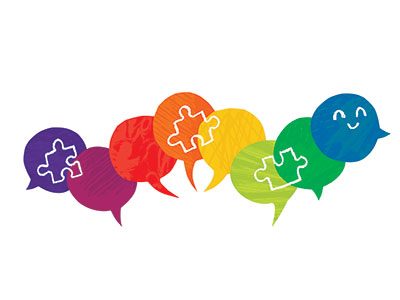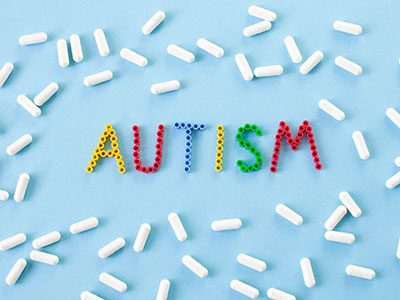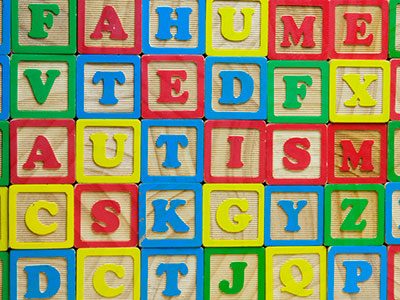Autism is a brain-based difference in the way a person learns, socializes, communicates, reacts to changes and experiences their environment including sensory input like sounds and lights. Autistic differences happen because of changes in how people’s brains develop. Like all people, autistic people are individuals. There is not one way to be autistic, like there is not one way to be human.
Autism is the most heritable neurodevelopmental condition that is caused by a complex combination of genetic and environmental factors. This is why autism tends to run in families, but not with a predictable pattern. Many genes controlling the ways that brain cells connect, communicate and function may be different in autistic people. When scientists talk about autism having “environmental” causes, they mean factors besides genetics that influence the developing brain, like being born prematurely, having older parents and having some medication, illness or other exposures during pregnancy. In the scientific literature, “environmental” does not necessarily refer to toxins.
Many leading medical organizations, like the Society for Developmental & Behavioral Pediatrics (SDBP), the American Academy of Pediatrics, the American Psychiatric Association and the American College of Obstetricians and Gynecologists have released recent statements about autism. These statements agree that:
- Rigorous research has shown there is no link between the measles, mumps and rubella (MMR) vaccine (or any other vaccine) and autism.
- There is no proven connection between Tylenol and autism.
- Leucovorin is not a treatment that is helpful or safe for most patients with autism. Leucovorin is a form of vitamin B sometimes studied in certain individuals with a rare condition called cerebral folate deficiency (CFD) that has autistic features, seizures and movement problems. It is not an established treatment for individuals with autism who do not have CFD.
- A folate receptor antibody test (FRAT) is not recommended for patients with autism. FRAT is a blood test. Medical groups do not recommend FRAT testing for children with autism. The test is not validated and it is not covered by insurance.
- People should talk to their healthcare providers about any questions they have.
One big concern is the negative manner in how autism is sometimes being discussed. The Autistic Self Advocacy Network (ASAN), an organization run by and for autistic people, says: “Autism is a natural part of human diversity. Autistic people usually enjoy a good quality of life when we have the supports we need. Autism is not a problem for which anyone needs to be blamed. There is no cure-all for autism, but there are measures we can take to empower autistic people to have good lives. Autistic people require self-directed, individualized supports and services informed by our needs.”
Finally, it’s important that researchers work together with the autistic community. In the D.C. area, Children’s National Hospital and the DC Autism Collaborative have been having community meetings to learn more about what research people want to see about early autism evaluations and services. In these meetings, we heard that families and providers want more research on:
- Schools: How to better prepare teachers to support and include autistic students in class.
- Stigma: How to reduce negative attitudes about autism.
- Assessments: How to make it easier to get autism assessments given the long wait times.
- Interventions: What are the best ways to help autistic people with sensory processing challenges.
Families thought that building trust, improving awareness, communication and accessibility, and making sure people are paid fairly would encourage more people to take part in research.
Autism is a fundamental part of who someone is, starting before they are even born. Some parts of being autistic or loving someone who is autistic can be hard, and many other parts can be joyous and beautiful. Science-backed therapies and support can help autism families build skills and improve quality of life. The earlier autistic children are identified, the more support and therapy can help.
 https://riseandshine.childrensnational.org/wp-content/uploads/2025/10/autism-image-feature.jpg
300
400
Rise and Shine
https://riseandshine.childrensnational.org/wp-content/uploads/2017/11/childrens_riseandshine_logo.jpg
Rise and Shine2025-10-28 15:41:562025-10-28 15:44:24Understanding autism beyond the headlines
https://riseandshine.childrensnational.org/wp-content/uploads/2025/10/autism-image-feature.jpg
300
400
Rise and Shine
https://riseandshine.childrensnational.org/wp-content/uploads/2017/11/childrens_riseandshine_logo.jpg
Rise and Shine2025-10-28 15:41:562025-10-28 15:44:24Understanding autism beyond the headlines




















Leave a Comment
Want to join the discussion?Feel free to contribute!